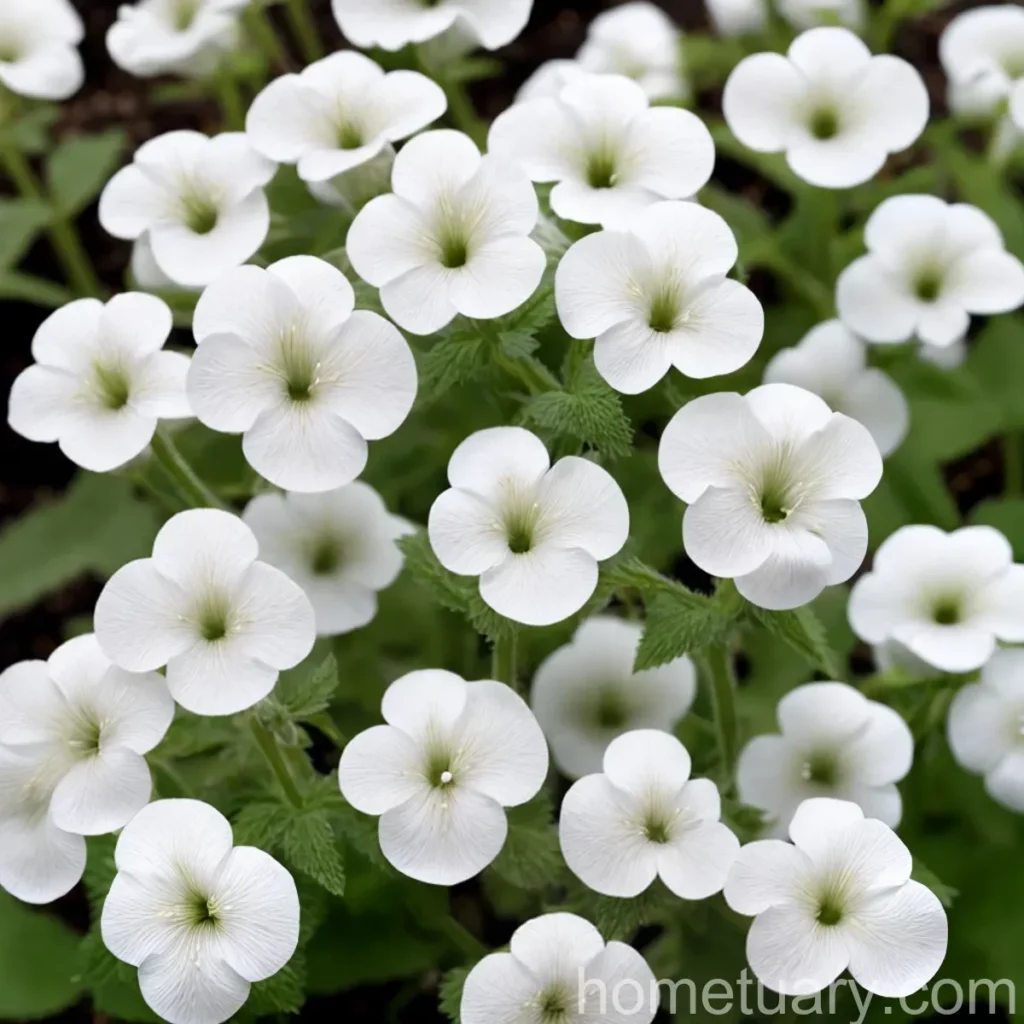Lamium White Nancy: A Complete Guide
Lamium White Nancy, scientifically known as Lamium Maculatum ‘White Nancy,’ is a charming perennial plant esteemed for its variegated foliage and delicate flowers. This article seeks to provide a comprehensive guide to the cultivation, care, and uses of this splendid plant, as well as addressing common issues such as diseases and pests.
What is Lamium White Nancy?
Lamium White Nancy, commonly referred to as White Nancy Lamium or White Nancy deadnettle, is a member of the Lamiaceae family. This family encompasses a vast array of aromatic herbs and ornamental plants, many of which are favored for their beautiful flowers and foliage.
Key Takeaways
- Scientific Name: Lamium Maculatum ‘White Nancy’
- Common Names: White Nancy Lamium, White Nancy deadnettle
- Family: Lamiaceae
Culture
Lamium White Nancy is a versatile and adaptable plant that thrives in various conditions. Understanding its cultural requirements is paramount to successful cultivation.
Uses
The plant has multiple uses, including:
- Ornamental Purposes: Lamium White Nancy is often used in garden beds, borders, and containers to add visual interest and color.
- Groundcover: Due to its spreading nature, the plant serves as an excellent groundcover, filling in spaces and suppressing weed growth.
- Attracting Wildlife: The flowers of Lamium White Nancy attract pollinators, making it a beneficial addition to gardens aimed at supporting local wildlife.
Water
Lamium White Nancy exhibits moderate water needs. It prefers consistently moist soil but is also fairly tolerant of short periods of drought once established. Adequate watering during dry spells is crucial for maintaining healthy foliage and promoting flower production.
Sunlight
This plant demonstrates a preference for partial shade to full shade. It thrives in areas with limited direct sunlight, making it an ideal choice for shaded garden beds.
Fertilizer
A balanced, all-purpose fertilizer or a fertilizer specifically formulated for flowering perennials can be applied in spring to encourage robust growth and prolific blooming. It is important to follow the manufacturer’s recommendations for application rates.
Soil
Lamium White Nancy thrives in well-draining, humus-rich soil. The addition of organic matter, such as compost, can enhance soil structure and fertility, providing an ideal growing environment for the plant.
Pruning
Regular deadheading of spent flowers can prolong the blooming period and maintain a neat appearance. Additionally, trimming back the plant in early spring can help control its spread and rejuvenate its growth.
Propagation
Lamium White Nancy can be propagated through several methods, including division, stem cuttings, and seeds.
Division
Dividing mature clumps in early spring or fall is an effective way to propagate Lamium White Nancy. The divided sections can be replanted in suitable locations, and with proper care, they will establish themselves and flourish.
Stem Cuttings
Taking stem cuttings from healthy plants and rooting them in a suitable propagation medium is another reliable method of propagation. This approach allows for the creation of numerous new plants with the same desirable characteristics as the parent plant.
Seeds
While Lamium White Nancy readily self-seeds, collecting and sowing the seeds can be a rewarding way to propagate the plant and introduce it to new areas of the garden or landscape.
Container Popularity
Due to its spreading nature, Lamium White Nancy is well-suited for container gardening. Its low-growing habit makes it an excellent choice for cascading over the edges of containers, providing a delightful display of foliage and flowers.
Common Diseases
While Lamium White Nancy is generally resistant to many diseases, it can be susceptible to certain issues under unfavorable conditions. Common diseases that may affect the plant include:
- Powdery Mildew: This fungal disease may appear as a white, powdery substance on the foliage, leading to discoloration and stunted growth.
- Root Rot: Overly wet or poorly-draining soil can cause root rot, which manifests as wilting and yellowing of the leaves, and the plant’s overall decline.
Disease Diagnosis
If signs of disease are observed on Lamium White Nancy, it is crucial to accurately diagnose the issue to implement an effective course of action. Proper diagnosis involves identifying the specific symptoms and, if necessary, seeking professional assistance to confirm the presence of a particular disease.
Common Pests
Lamium White Nancy is generally resistant to most pests; however, certain insects may occasionally present issues. Common pests that may affect this plant include:
- Aphids: These small, sap-sucking insects can cause distortion and discoloration of the foliage, and in severe cases, weaken the plant’s overall health.
- Spider Mites: These tiny pests can infest the undersides of leaves, resulting in stippling and webbing, which can compromise the plant’s vitality.
Botanist’s Tips
Fun Facts
- The variegated leaves of Lamium White Nancy provide visual interest even when the plant is not in bloom, making it an attractive addition to shaded areas.
- The plant’s ability to thrive in moist, shaded conditions makes it an excellent choice for landscaping challenging areas in gardens and landscapes.
Links to External Resources
- Royal Horticultural Society – Lamium Maculatum ‘White Nancy’
- Missouri Botanical Garden – Lamium maculatum
In conclusion, Lamium White Nancy is a delightful and versatile plant with numerous ornamental and practical uses. Its adaptability to shaded conditions, moderate water requirements, and appealing foliage and flowers make it a valuable addition to gardens and landscapes. By following the recommended cultural practices and addressing any issues promptly, enthusiasts can foster healthy and vibrant displays of Lamium White Nancy throughout the growing season.















